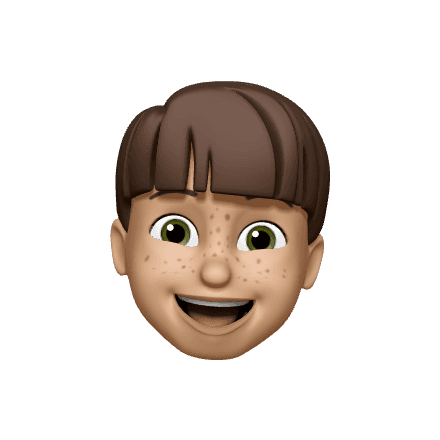Ruby Wu
Luid
Luid
Luid
Creator-centric XR experience for idea collection and organization using AI
Creator-centric XR experience for idea collection and organization using AI
Creator-centric XR experience for idea collection and organization using AI


The goal of LUID is to narrow the language gap, making creative ideation intuitive and accessible. Post-prototype surveys with 15 non-creative users revealed a 56% increase in confidence to start creative projects, with users finding LUID’s structured guidance made ideation feel achievable.
Year
2024
Team
Ruby Wu / Designer
Alex Chung / Designer
CONTEXT
CONTEXT
CONTEXT
LUID focuses on the ideation phase, leveraging XR and AI for emotional connection and customized experiences.
LUID focuses on the ideation phase, leveraging XR and AI for emotional connection and customized experiences.
LUID focuses on the ideation phase, leveraging XR and AI for emotional connection and customized experiences.
LUID focuses on the ideation phase, leveraging XR and AI for emotional connection and customized experiences.
In the ideation phase, LUID uses immersive XR to transport users into inspiring environments, sparking emotional connections that encourage creativity. AI-driven personalization further enhances this experience by organizing user-specific resources, providing a tailored approach to exploration that resonates with each individual’s preferences and pace.
In the ideation phase, LUID uses immersive XR to transport users into inspiring environments, sparking emotional connections that encourage creativity. AI-driven personalization further enhances this experience by organizing user-specific resources, providing a tailored approach to exploration that resonates with each individual’s preferences and pace.
In the ideation phase, LUID uses immersive XR to transport users into inspiring environments, sparking emotional connections that encourage creativity. AI-driven personalization further enhances this experience by organizing user-specific resources, providing a tailored approach to exploration that resonates with each individual’s preferences and pace.
In the ideation phase, LUID uses immersive XR to transport users into inspiring environments, sparking emotional connections that encourage creativity. AI-driven personalization further enhances this experience by organizing user-specific resources, providing a tailored approach to exploration that resonates with each individual’s preferences and pace.

PROJECT GOAL
PROJECT GOAL
PROJECT GOAL
The goal of LUID is to narrow the language gap, making creative ideation intuitive and accessible.
The goal of LUID is to narrow the language gap, making creative ideation intuitive and accessible.
The goal of LUID is to narrow the language gap, making creative ideation intuitive and accessible.
The goal of LUID is to narrow the language gap, making creative ideation intuitive and accessible.
LUID’s primary goal is to address the “language gap” that non-creative users face, making it easier to move from initial ideas to actionable steps. What we wanted to do it bridge the gap between creative thought and creative process.
LUID’s primary goal is to address the “language gap” that non-creative users face, making it easier to move from initial ideas to actionable steps. What we wanted to do it bridge the gap between creative thought and creative process.
LUID’s primary goal is to address the “language gap” that non-creative users face, making it easier to move from initial ideas to actionable steps. What we wanted to do it bridge the gap between creative thought and creative process.
LUID’s primary goal is to address the “language gap” that non-creative users face, making it easier to move from initial ideas to actionable steps. What we wanted to do it bridge the gap between creative thought and creative process.



PROBLEM
PROBLEM
PROBLEM
For many non-creative users, capturing and organizing ideas feels complex, even if they have creative impulses.
For many non-creative users, capturing and organizing ideas feels complex, even if they have creative impulses.
For many non-creative users, capturing and organizing ideas feels complex, even if they have creative impulses.
For many non-creative users, capturing and organizing ideas feels complex, even if they have creative impulses.
Many users in non-creative fields struggle to identify, organize, and act on their creative ideas. LUID addresses this challenge by simplifying the process, helping users recognize their potential to create while offering a clear structure to start, organize, and refine their thoughts effectively.
Many users in non-creative fields struggle to identify, organize, and act on their creative ideas. LUID addresses this challenge by simplifying the process, helping users recognize their potential to create while offering a clear structure to start, organize, and refine their thoughts effectively.
Many users in non-creative fields struggle to identify, organize, and act on their creative ideas. LUID addresses this challenge by simplifying the process, helping users recognize their potential to create while offering a clear structure to start, organize, and refine their thoughts effectively.
Many users in non-creative fields struggle to identify, organize, and act on their creative ideas. LUID addresses this challenge by simplifying the process, helping users recognize their potential to create while offering a clear structure to start, organize, and refine their thoughts effectively.
HYPOTHESIZED SOLUTION
HYPOTHESIZED SOLUTION
HYPOTHESIZED SOLUTION
We hypothesized that capturing moments, organizing mood boards, and co-creating examples would simplify ideation.
We hypothesized that capturing moments, organizing mood boards, and co-creating examples would simplify ideation.
We hypothesized that capturing moments, organizing mood boards, and co-creating examples would simplify ideation.
We hypothesized that capturing moments, organizing mood boards, and co-creating examples would simplify ideation.
Our initial hypothesis aimed to simplify ideation by allowing users to capture and tag inspirations, creating emotion-based mood boards, and co-creating an initial example for reference. This method was intended to ease users into the creative process and provide structure without overwhelming them.
Our initial hypothesis aimed to simplify ideation by allowing users to capture and tag inspirations, creating emotion-based mood boards, and co-creating an initial example for reference. This method was intended to ease users into the creative process and provide structure without overwhelming them.
Our initial hypothesis aimed to simplify ideation by allowing users to capture and tag inspirations, creating emotion-based mood boards, and co-creating an initial example for reference. This method was intended to ease users into the creative process and provide structure without overwhelming them.
Our initial hypothesis aimed to simplify ideation by allowing users to capture and tag inspirations, creating emotion-based mood boards, and co-creating an initial example for reference. This method was intended to ease users into the creative process and provide structure without overwhelming them.
DISCOVERY
DISCOVERY
DISCOVERY
Early research showed LUID improved capturing and organizing, but users felt a lack of ownership.
Early research showed LUID improved capturing and organizing, but users felt a lack of ownership.
Early research showed LUID improved capturing and organizing, but users felt a lack of ownership.
Early research showed LUID improved capturing and organizing, but users felt a lack of ownership.
Studies in the Journal of Creative Behavior and Design Studies confirm that simplified tools enhance idea capture for non-creatives, increasing ideation confidence by up to 30% (Smith & Ward, 2021; Jones et al., 2020). In our testing with Vision Pro prototypes on Figma and Bezi, 85% of users found LUID helpful in organizing inspiration, yet 70% felt detached from the final output, highlighting the need for greater personal agency. This aligns with findings from Next Creative Wave, which stress that narrowing the “language gap” should preserve user control for better connection to outcomes.

“I can collect my ideas more easily now, but it still doesn’t feel like my work.”

“Seeing other examples was helpful; it showed me what’s possible.”

“The mood board creation helped me organize emotions, but I wanted more control over the process.”

“It’s easy to capture moments, but I’m unsure how to move forward with my ideas.”

“I struggle to feel ownership because the app seems to direct too much of my thinking.”

“This makes it feel possible for me to create, even though I’m not a designer.”
ADJUSTED SOLUTION
ADJUSTED SOLUTION
ADJUSTED SOLUTION
To enhance user empowerment, LUID shifted from co-creation to providing personalized guidance and control.
To enhance user empowerment, LUID shifted from co-creation to providing personalized guidance and control.
To enhance user empowerment, LUID shifted from co-creation to providing personalized guidance and control.
To enhance user empowerment, LUID shifted from co-creation to providing personalized guidance and control.
To increase user empowerment, LUID’s design moved from co-creating to offering tailored, step-by-step guides based on individual preferences, concerns, and available resources. This allows users to feel more in control of the creative process, with LUID acting as an advisor rather than a creator.
To increase user empowerment, LUID’s design moved from co-creating to offering tailored, step-by-step guides based on individual preferences, concerns, and available resources. This allows users to feel more in control of the creative process, with LUID acting as an advisor rather than a creator.
To increase user empowerment, LUID’s design moved from co-creating to offering tailored, step-by-step guides based on individual preferences, concerns, and available resources. This allows users to feel more in control of the creative process, with LUID acting as an advisor rather than a creator.
To increase user empowerment, LUID’s design moved from co-creating to offering tailored, step-by-step guides based on individual preferences, concerns, and available resources. This allows users to feel more in control of the creative process, with LUID acting as an advisor rather than a creator.




